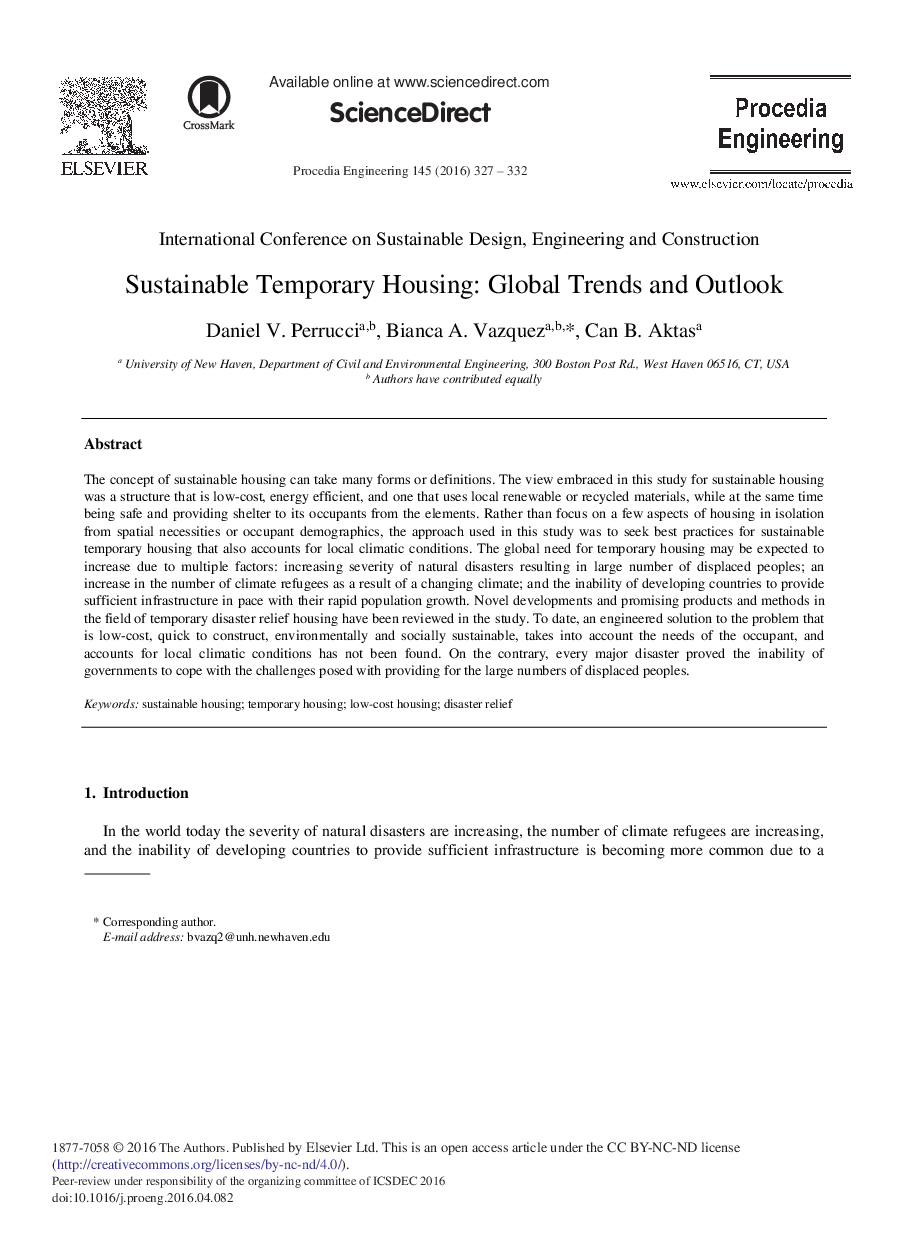| Article ID | Journal | Published Year | Pages | File Type |
|---|---|---|---|---|
| 853684 | Procedia Engineering | 2016 | 6 Pages |
Abstract
The concept of sustainable housing can take many forms or definitions. The view embraced in this study for sustainable housing was a structure that is low-cost, energy efficient, and one that uses local renewable or recycled materials, while at the same time being safe and providing shelter to its occupants from the elements. Rather than focus on a few aspects of housing in isolation from spatial necessities or occupant demographics, the approach used in this study was to seek best practices for sustainable temporary housing that also accounts for local climatic conditions. The global need for temporary housing may be expected to increase due to multiple factors: increasing severity of natural disasters resulting in large number of displaced peoples; an increase in the number of climate refugees as a result of a changing climate; and the inability of developing countries to provide sufficient infrastructure in pace with their rapid population growth. Novel developments and promising products and methods in the field of temporary disaster relief housing have been reviewed in the study. To date, an engineered solution to the problem that is low-cost, quick to construct, environmentally and socially sustainable, takes into account the needs of the occupant, and accounts for local climatic conditions has not been found. On the contrary, every major disaster proved the inability of governments to cope with the challenges posed with providing for the large numbers of displaced peoples.
Related Topics
Physical Sciences and Engineering
Engineering
Engineering (General)
Authors
Daniel V. Perrucci, Bianca A. Vazquez, Can B. Aktas,
